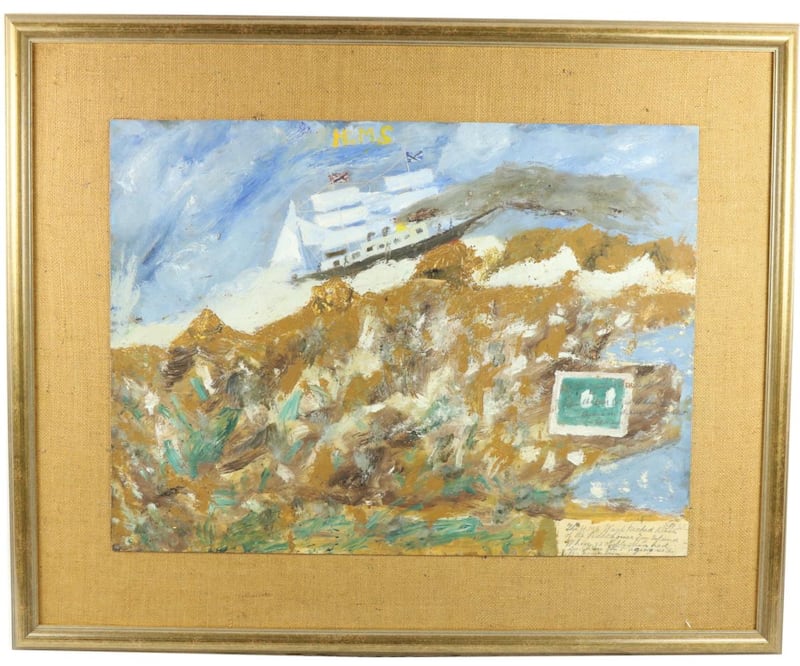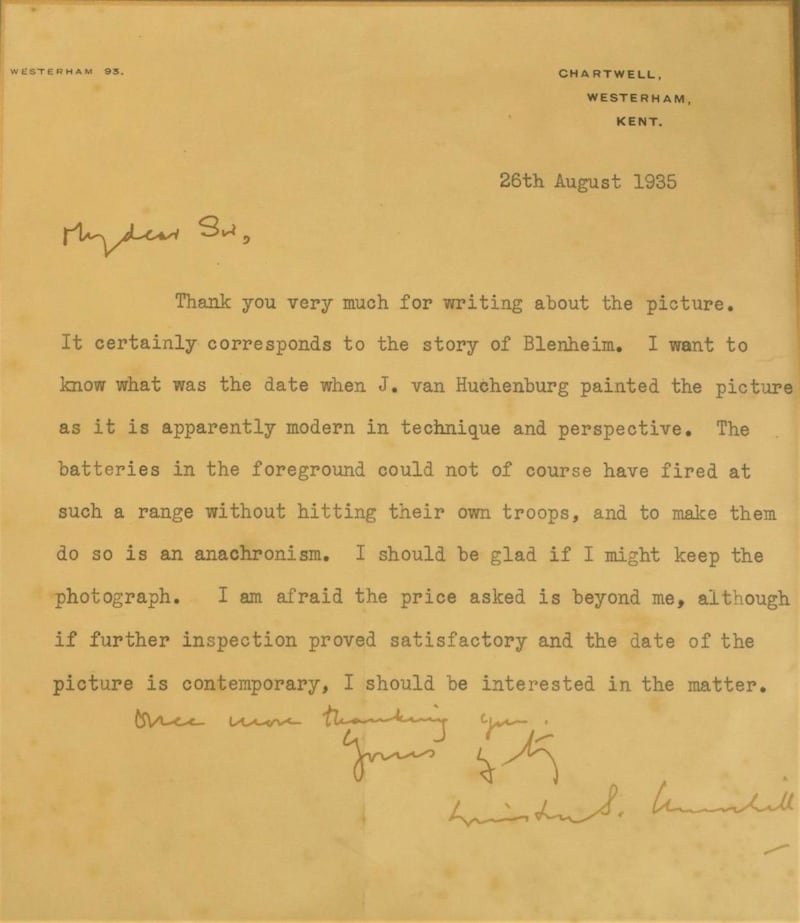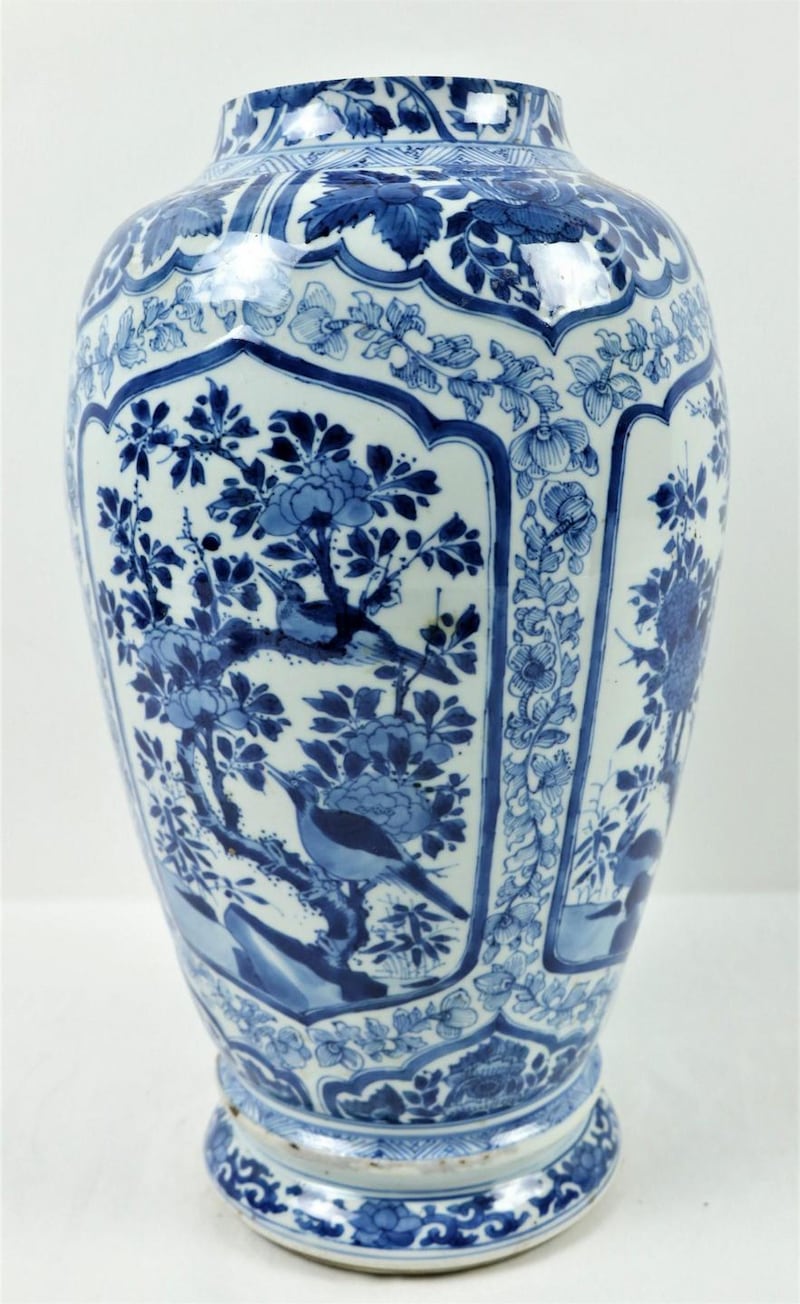The contents of Killoughter House in Ashford, Co Wicklow will be offered in a live online Fonsie Mealy sale on Tuesday May 18th, with the additional facility of telephone and absentee bidding.
The property is home to Sir David Davies, who is downsizing from Abbey Leix, the James Wyatt-designed classical 2,500sq m (26,910sq ft) mansion which he purchased in 1995. After years of restoration, the house and demesne – which has one of the most important collection of trees, and the oldest oak in Ireland – is being sold through Sotheby's seeking €20 million.

Killoughter, described in the National Inventory of Architectural Heritage as a "well-preserved Georgian house with a delightful setting and an excellent example of its genre", was purchased by Davies' father, a steel baron, in the 1940s. Though born in Wales, Davies, who worked as an international banker, has fully immersed himself in Irish life. At 82, he is president of the Wexford Opera Festival Trust, a founding chairman of the Irish Heritage Trust, and succeeded Patrick Guinness in 2011 as the president of the Irish Georgian Society.
As Killoughter is laden with treasures assembled by Davies’ father, he is selling off the contents to make room for his own collection. The video on Fonsie Mealy’s much-improved new website makes a fine companion to the online catalogue of approximately 600 lots.
Chester Beatty
Killoughter was once owned by the renowned art collector Sir Chester Beatty, who established a stud farm on the estate, and the sale lists three lots which originally came from Beatty's sprawling 17th-century Clonmannon House: a large 19th-century brass hall lantern (lot 565, €400-€600); a fine 19th-century marble-topped gilt table (lot 382, €4,000-€6,000) and gilt parcel commode topped with Sienna marble from the 18th century (lot 450, €1,000-€1,500).
A most interesting painting is lot 292, which depicts the HMS Wasp, by James Dixon (€7,000-€9,000). Dixon lived all his life on Tory Island working as a farmer and fisherman, and only started to paint at the age of 72 after being inspired by the artist Derek Hill, who had established a painting hut on the island. The painting depicts the sinking of the boat off the small island – a mystery that is still shrouded in darkness today. The HMS Wasp was a familiar vessel along these waters as it had delivered supplies of potatoes to the starving islanders by the Quakers; however, in 1884, the boat was carrying bailiffs to evict starving tenant families. The ship collided with the rocks directly below Tory lighthouse and, after 30 minutes, only the masthead protruded from the seas, taking 52 men to the depths, with only six survivors. An inquiry held by the Royal Navy found that the Wasp was lost "in consequence of the want of due care and attention", but it is widely speculated that the lights in the lighthouse were deliberately extinguished due to the purpose of the voyage.

John Spencer Churchill and his uncle Winston also feature in the sale. Lot 320 is a letter from Sir Winston Churchill from his home in Kent to an unnamed correspondent (€700-€1,000), who had sent a photograph and description of a painting of the Battle of Blenheim by Jan van Huchenburg. Churchill declines to purchase the painting, writing "the price is beyond me", but also comments on what he saw as an inaccurate depiction of military activity in the work. "The batteries in the foreground could not of course have fired at such a range without hitting their own troops."
Rasputin
Calvi, Corsica, a painting by John Spencer Churchill (lot 487, €500-€700), depicts a castle on a hill of what was then a poverty-stricken Mediterranean island. A most interesting note on reverse reads: “The building on the extreme right was where Prince Felix Yussopov, who murdered Rasputin, stayed. He gave it to his batman, Tio, who died some 15 years ago. His widow, a Corsican lady, lives there now.”
After the assassination of Rasputin, who was poisoned twice, shot three times and beaten, and eventually died by drowning all in the same day, Yusupov and his sidekick, a handsome dancer named Tao, fled from Russia to Corsica in 1928. (Churchill appears to misspell both names on the painting). At this little spot on Corsica, Tao opened the island’s first nightclub, Chez Tao, which still exists today and is credited for kickstarting the transformation of Calvi into one of the Mediterranean’s most expensive and sophisticated spots.
While Tao tangoed through the rest of his life, Prince Yusupov spent the remainder of his days in prolonged litigation battles while also exiled in France. He sued American film companies MGM and CBS for invasion of privacy in connection with films about Rasputin. He won the case against MGM and was awarded £25,000, which was an enormous sum at the time. This case led to the "all persons fictitious" disclaimer that now appears at the end of every American film. Yusupov was sued by Rasputin's daughter Maria for £800,000, a case which was eventually dismissed.
fonsiemealy.ie













